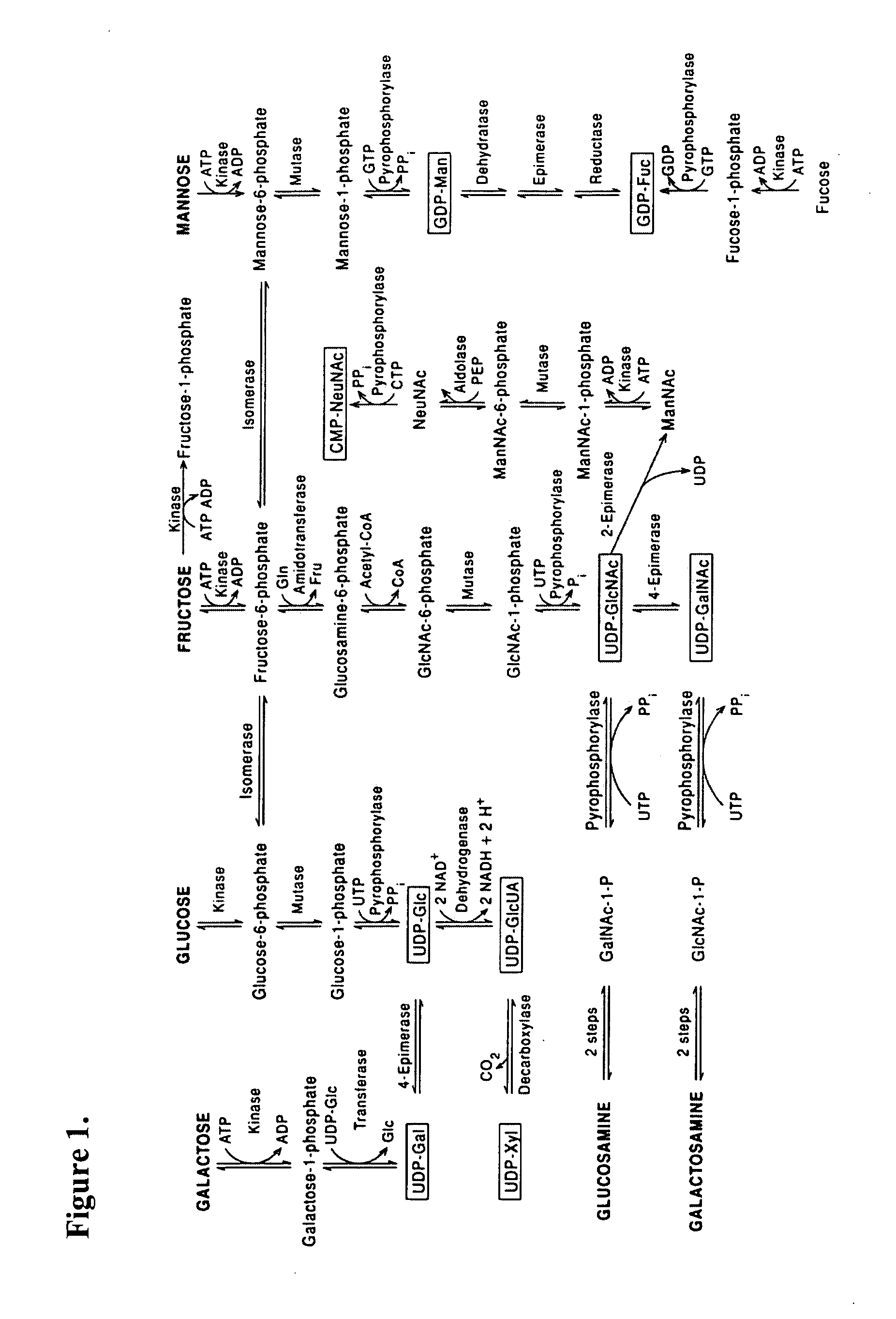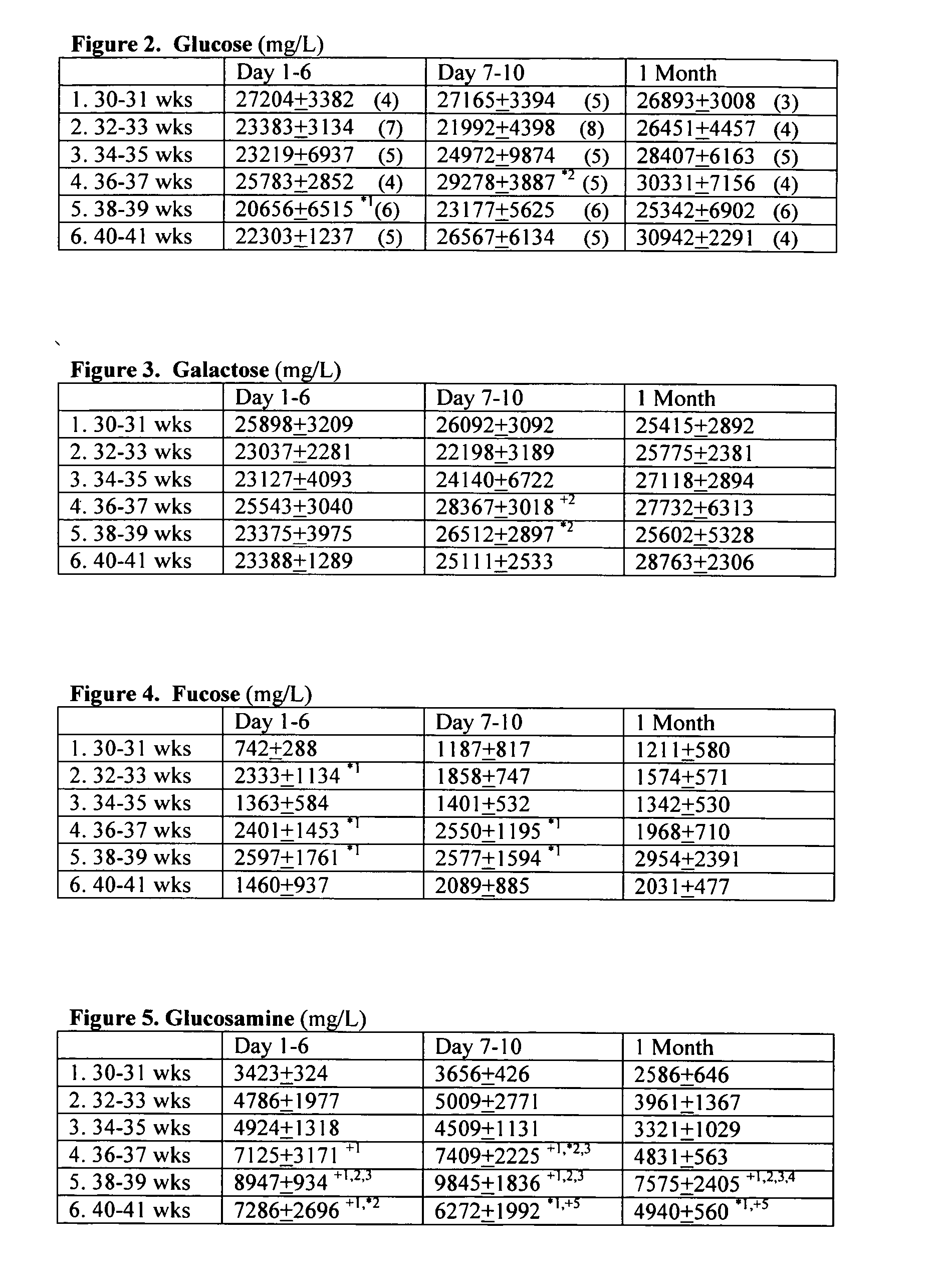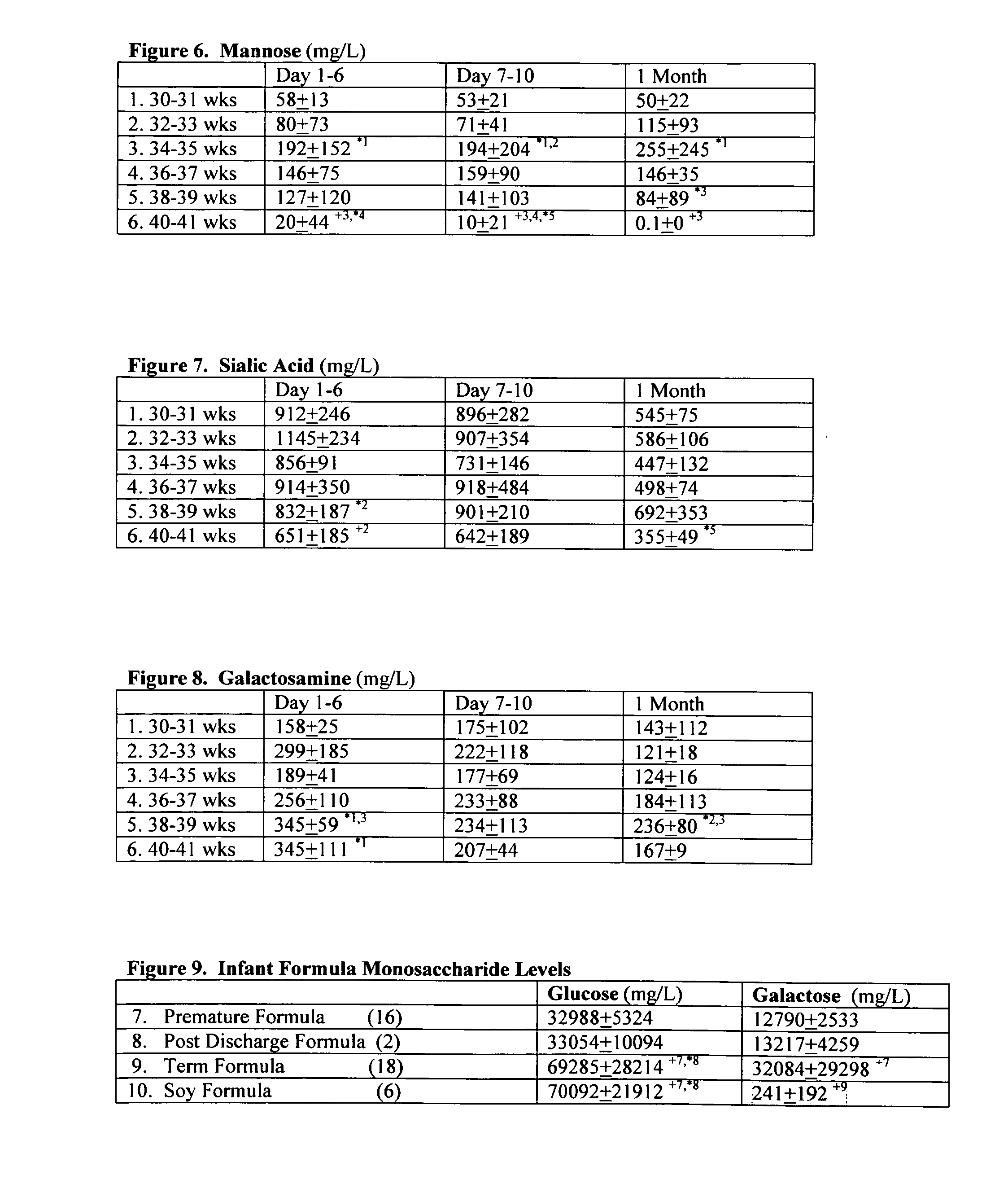Prenatal and postnatal screening and treatment of critical monosaccharide deficiencies for neurologic and immunologic function
- Summary
- Abstract
- Description
- Claims
- Application Information
AI Technical Summary
Problems solved by technology
Method used
Image
Examples
example 1
Analyses of the Monosaccharide Content of Term and Preterm Breast Milk and Infant Formulas
INTRODUCTION
[0103]Samples of hydrolyzed term and preterm breast milk and infant formulas were evaluated for total levels of the following monosaccharides: glucose, galactose, fucose, glucosamine, mannose, sialic acid and galactosamine using standardized techniques for anion-exchange liquid chromatography with integrated pulsed amperometric detection (Eberendu, 2005). The resulting values in term and preterm breast milk and infant formula are listed below in Table 1.
[0104]The following monosaccharides are higher in term than in preterm breast milk by the following percentages: glucose 13%, galactose 7%, fucose 37%, and mannose 79%. On the other hand, the following monosaccharides are lower in term than in preterm breast milk by the following percentages: glucosamine 60%, sialic acid 11-20%. Fucose was not detected in term and preterm formulas, nor was glucosamine which serves as a precursor for ...
example 2
Maternal-Fetal Monosaccharide Levels in Preterm and Term Pregnancies
INTRODUCTION
[0108]Early nutrition is critical for normal fetal and infant growth and development. With regard to fetal nutrition, glucose metabolism, placental transport and fetal utilization have been described, but there is little known regarding other important nutritional components for the fetus. There is increased transplacental transport of many nutrients as pregnancy progresses; however, this may result in relative deficiencies if the infant is delivered prematurely. Although several important sugars are metabolized from glucose, there is little information on additional monosaccharides that may be important for fetal growth and development.
[0109]The neonate receives additional exposure to important oligosaccharides postnatally through mother's breast milk. There is little information on the monosaccharides that comprise important dietary oligosaccharides found in human breast milk. Inventor's studies have s...
example 3
Maternal Lewis Phenotype is Associated with Human Milk Monosaccharide Content
INTRODUCTION
[0141]Human milk oligosaccharides (HMOs), unique to breast milk, vary in content in term (T) vs. preterm (P) milks. Previous studies have shown that HMO content is related to mother's ABO and Lewis blood-group phenotypes. Inventor has found, in a related study, that P delivery is significantly increased among mothers with Lewis recessive phenotype.
[0142]Purpose of Study
[0143]Human milk oligosaccharides (HMOs) are unique to breast milk, and their content varies between mothers and between term and preterm milk. The oligosaccharide spectrum and content of mother's milk is genetically determined and related to her ABO and Lewis secretor status (Viverge et al., 1985, 1990; Thurl et al., 1997; Nakhla et al., 1999; Erney et al., 2001). The Lewis secretor is expressed by oligosaccharides rich in fucose, N-acetylglucosamine and sialic acid (Viverge et al., 1990; D'Adamo and Kelly, 2001). Several oligosa...
PUM
| Property | Measurement | Unit |
|---|---|---|
| birth weight | aaaaa | aaaaa |
| birth weight | aaaaa | aaaaa |
| clearance half-time | aaaaa | aaaaa |
Abstract
Description
Claims
Application Information
 Login to View More
Login to View More - R&D
- Intellectual Property
- Life Sciences
- Materials
- Tech Scout
- Unparalleled Data Quality
- Higher Quality Content
- 60% Fewer Hallucinations
Browse by: Latest US Patents, China's latest patents, Technical Efficacy Thesaurus, Application Domain, Technology Topic, Popular Technical Reports.
© 2025 PatSnap. All rights reserved.Legal|Privacy policy|Modern Slavery Act Transparency Statement|Sitemap|About US| Contact US: help@patsnap.com



